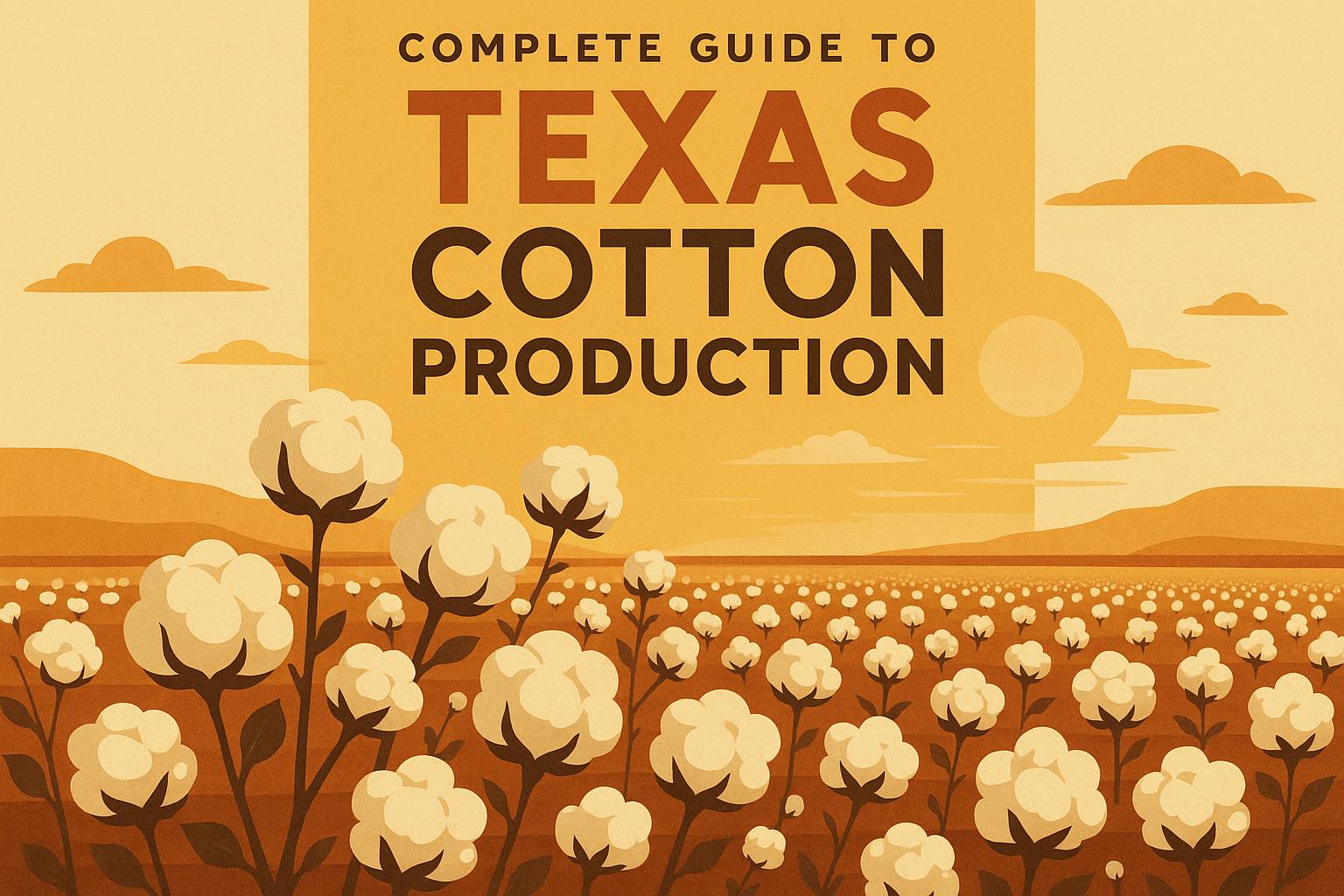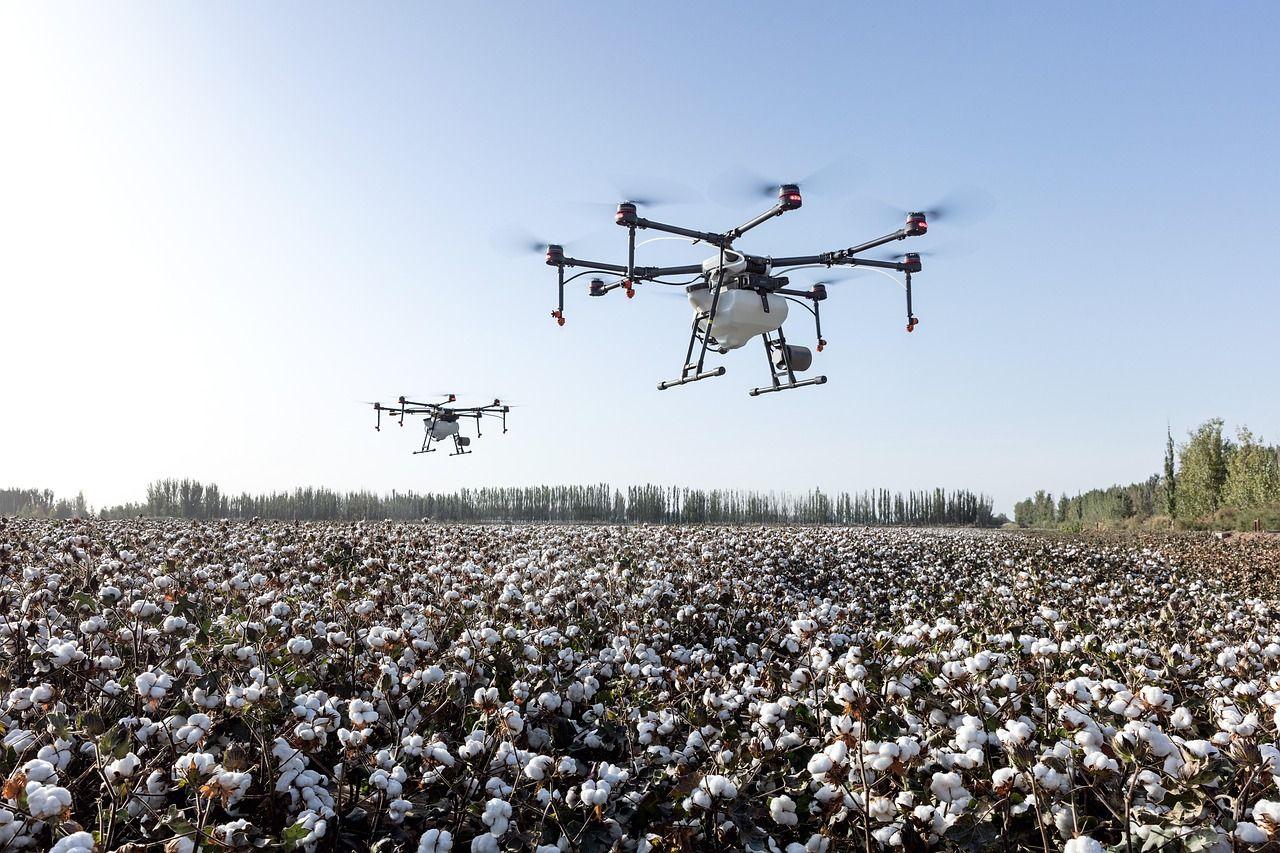In the high-stakes arena of cotton farming, where volatile weather patterns can wipe out a season's potential in days and market swings dictate profitability margins down to the bale, effective risk management in cotton farming emerges as the linchpin for long-term viability. Seasoned producers, juggling 1,000+ acre operations across the Beltwide, know all too well that a single drought or tariff shift can erode hard-won gains, slashing net returns by 30-50% as seen in historical yield volatility data from extension services. Yet, with layered approaches—from futures hedging to precision scouting—risk management in cotton farming transforms threats into manageable variables, stabilizing cash flows and preserving equity against compounding pressures like input inflation and regulatory flux. This isn't about eliminating uncertainty; it's about fortifying operations to weather it, drawing on proven frameworks that boost resilience without inflating overheads. For veterans optimizing varietal stacks and rotation cycles, these risk management in cotton farming tactics integrate seamlessly, potentially safeguarding 15-25% more revenue annually through proactive buffers. Dive deeper with our nutrient management strategies for cotton farming post to align soil health with broader risk mitigations.
Understanding Key Risks in Cotton Production
At its core, risk management in cotton farming demands a clear-eyed assessment of perils that span environmental, operational, market, and financial domains. Weather extremes top the list: Prolonged deficits in the Plains can drop lint yields below 800 lbs/acre, while excess humidity in the Delta fosters Fusarium outbreaks, compounding losses via secondary infections. Market risks loom large too—global oversupply from competitors like Brazil can depress futures 20-40 cents/lb overnight, eroding margins on forward contracts.
Operational hazards include pest surges, such as tarnished plant bugs breaching ET thresholds mid-bloom, necessitating defoliant overrides that hike costs 10-15%. Financially, leverage on equipment loans amplifies exposure; a 5% interest spike amid low basis can strain liquidity, forcing deferred maintenance that cascades into next-cycle shortfalls. Quantifying these via tools like Monte Carlo simulations—factoring historical variances in rainfall (CV ~25%) and price elasticity—helps prioritize, ensuring risk management in cotton farming targets high-impact vulnerabilities first.
Diversification Tactics: Spreading Bets Across Crops and Markets
Diversification stands as a cornerstone of risk management in cotton farming, diluting exposure by blending revenue streams without diluting focus. Rotate with peanuts or soybeans in a 2:1 cycle to hedge against cotton-specific downturns; studies show this buffers income volatility by 20-30%, as legumes fix nitrogen to cut fertilizer bills while qualifying for diverse crop insurance riders.
On the market front, allocate 20-30% of acreage to identity-preserved contracts for premium organics or colored fibers, tapping niches where basis premiums hold steady at 5-10 cents/lb above commodity grades. For veterans, micro-diversification via varietal zoning—planting drought-tolerant PHY lines in marginal sands alongside standard DP in fertility cores—yields intra-field stability, maintaining averages above 1,200 lbs/acre even in deficit years.
- Crop Rotation Benefits: Enhances soil biodiversity, reducing nematode carryover by 40%; pair with cover crops like crimson clover for erosion control.
- Revenue Streams: Integrate agritourism or seed stock sales to offset 10-15% of fixed costs, insulating against lint price dips.
- Implementation Tip: Use GIS mapping to model rotation ROI, targeting 15% uplift in net farm income over monocrop baselines.
These moves in risk management in cotton farming foster adaptability, turning portfolio theory from Wall Street into field-level strategy.
Hedging and Financial Instruments: Locking in Profits Against Price Swings
For price-savvy operators, hedging via futures and options forms the tactical edge in risk management in cotton farming, neutralizing volatility that averages 15-20% annually per CME data. Put options on December contracts at bloom stage cap downside at strike prices 10-15 cents below basis, costing 2-4 cents in premiums but recouping via protected sales floors.
Forward contracting with co-ops secures differentials, often 1-2 cents/lb advantages over spot markets, while crop revenue protection (CRP) policies blend yield guarantees with price triggers, covering 80-90% of projected revenue shortfalls. Veterans layer these: A 50% hedged position mitigates a 30-cent drop, preserving $75-100/acre in margins.
| Instrument | Coverage Type | Cost Estimate | Protection Level | Best For |
|---|---|---|---|---|
| Futures Contracts | Price Floor/Ceiling | 1-2% of value | Full exposure hedge | Large-scale sellers |
| Put Options | Downside Only | 2-4 cents/lb | Flexible strikes | Volatile markets |
| CRP Insurance | Revenue | 1-1.5% premium | 80-90% guarantee | Yield-price combo risks |
| Forward Contracts | Basis Lock | Negotiable | Differential stability | Co-op aligned ops |
Consult our how subsidies affect cotton prices post for interplay with policy supports in risk management in cotton farming.
Technological Innovations for Operational Risk Mitigation
Precision tech revolutionizes risk management in cotton farming, deploying sensors and analytics to preempt disruptions before they escalate. Variable-rate applicators, guided by NDVI drone imagery, calibrate N sidedress to soil zones, averting over-fertilization losses (up to $20/acre) while curbing leaching risks under nitrate regs.
Yield monitors integrated with farm management software forecast deficits mid-season, triggering pivots like early defoliation to dodge quality docks from boll rot. For pest fronts, trap networks linked to AI alerts flag aphid thresholds at 50/leaf, enabling spot treatments that slash chemical use 25-40%.
- Drone Scouting: Weekly flights detect stress signatures, reducing scouting labor by 50% and enabling 10-15% yield rescues.
- IoT Soil Probes: Real-time moisture/EC data optimizes irrigation, mitigating salinity buildup in recycled tails.
- Predictive Analytics: Models blending NOAA data with field histories predict hail probabilities, prompting cover crop insurance add-ons.
Adopting these in risk management in cotton farming yields compounding efficiencies, with ROI hitting 3:1 within two cycles for tech-forward outfits.
Insurance and Government Programs: Building Safety Nets
Beyond private hedges, insurance and programs anchor risk management in cotton farming, with multi-peril crop insurance (MPCI) shielding against yield shortfalls at 75-85% coverage levels for premiums averaging 8-12% of liability. Supplemental tools like group risk protection (GRP) aggregate area yields, suiting diversified spreads with lower administrative burdens.
Farm Bill provisions, including price loss coverage (PLC) and agriculture risk coverage (ARC), activate on county benchmarks, reimbursing 85% of shortfalls—critical for base acre allocations that veterans maximize via historical planting proofs. Enrollment in conservation reserve enhancements offsets opportunity costs on marginal lands, yielding $50-80/acre in payments while curbing erosion risks.
Key to efficacy: Annual audits of coverage gaps, ensuring adjuncts like harvest price exclusion align with forward sales. Link to our cotton variety selection key factors post for varietal choices that bolster insurable yields in risk management in cotton farming.
Building Resilience Through Human and Organizational Factors
Risk management in cotton farming extends to the human element, where succession planning and team training fortify against turnover voids. Cross-training crews on harvester diagnostics cuts downtime 20-30%, while mentorship programs preserve institutional knowledge on local pathologies like Verticillium variants.
Co-op memberships amplify bargaining power, pooling data for collective hedging that trims transaction costs 5-10%. For solo operators, peer networks via extension yield benchmarking insights, spotting anomalies like micronaire drifts early.
- Training Protocols: Quarterly drills on equipment redundancies, reducing failure rates by 15%.
- Succession Frameworks: Equity transfers via trusts, minimizing tax hits on generational handoffs.
- Network Leverage: Regional alliances for shared scouting, distributing pest intel across 5,000+ acres.
These soft levers in risk management in cotton farming sustain operations through personnel flux.
Monitoring and Adaptive Frameworks: Continuous Vigilance
Sustained risk management in cotton farming thrives on adaptive loops: Quarterly reviews of P&L variances against benchmarks flag drifts, prompting recalibrations like pivot to shorter-season varieties in warming trends. Dashboards aggregating futures curves, soil metrics, and weather ensembles enable scenario planning, stress-testing portfolios for 10-20% shocks.
Annual risk registers—categorized matrices scoring likelihood x impact—prioritize actions, with thresholds triggering escalations. For the seasoned grower, this iterative cadence ensures agility, converting data into decisions that hold yields steady amid flux.
Explore synergies in our improving soil health in cotton farming post to embed resilience at the rhizosphere level.
Case Studies: Real-World Wins in Risk Mitigation
Consider a Mid-South co-op averaging 1,200 lbs/acre: By layering 40% hedged positions with CRP enrollment, they weathered a 25-cent plunge intact, netting 12% above peers. In the Southwest, a 2,000-acre spread deployed sentinel plots for lygus migration, averting $150k in blanket sprays via targeted strikes.
These vignettes underscore risk management in cotton farming as a mosaic—integrated pieces yielding outsized durability.
In wrapping up, mastering risk management in cotton farming equips you to navigate uncertainties with precision, from diversifying portfolios to tech-enabled foresight. Start with a risk audit: Map exposures, layer hedges, and drill contingencies. Revisit quarterly, adapting to your delta or plains realities. What's your top risk hedge?
P.S. My top diversification advice? Grow your non-farm income ASAP.


